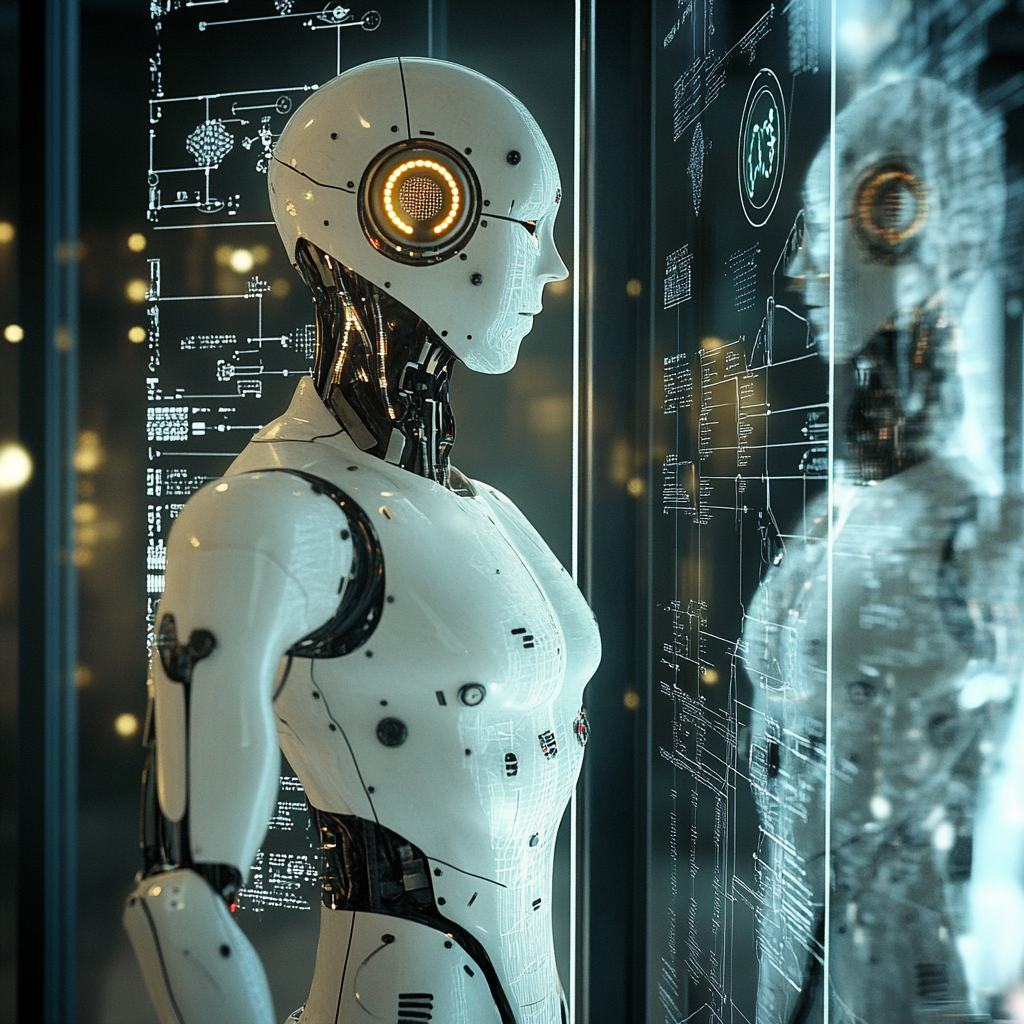
Robotics and the Human Self-Perception Exploration
Robotics: A New Lens on the Human 'Sense of Self'
Slowly but surely, we’re encroaching upon the mystical realm of self-awareness, a trait that has long been the playground of philosophers and psychologists. But here's where it gets interesting: robotics is now strutting into this messy arena, brandishing its algorithms and sensors as tools to dissect and understand our very essence—the "sense of self." Sounds intriguing, right? Well, buckle up, because this journey promises to be anything but dull.
Diving Into the Depths of Self-Awareness
So, what exactly is this elusive "sense of self"? If you thought it was just more philosophical jargon, think again. It's a pivotal part of human consciousness, and it’s what allows us to recognize ourselves as distinct entities in the grand symphony of existence. But how do we measure such an abstract notion? Enter robotics, a field that has been making waves not just in factories, but also in the nuances of human behavior and development.
One of the most fascinating areas is early childhood development, where researchers are drawing parallels between how we recognize ourselves and how machines might learn to do the same. Picture this: the mirror self-recognition test, a classic method for gauging self-awareness in kids. In simple terms, it involves marking a child and observing whether they’ll try to wipe the mark off their own face or merely fiddle with the mirror. If they choose the first option, congratulations! They have just demonstrated a level of self-awareness that many adults might fail at after a few too many drinks.
Now, robots are getting in on the action. They tackle a similar challenge by using sensorimotor cues to figure out that the image they see in the mirror is not just another metal friend but, in fact, themselves. Think about the mind-bending implications here. If robots can develop a sense of self in this way, what does that say about their potential autonomy?
Proprioception: The Body's Inner Compass
But let’s push deeper because the world of self-awareness in robots isn’t simply about mirror selfies. Proprioception—the instinctual understanding of one’s body and its movements—is the magic ingredient in this recipe. You know when you close your eyes and still know exactly where your arms are? That’s proprioception in action. Researchers like Jasmine Berry at the USC Brain Body Dynamics Lab are knee-deep in this theme, creating robots that can simulate this very perception.
Imagine a robot that knows, without having to look, that its arm is raised or that it’s just bumped into a table leg. It’s like a toddler figuring out that it has limbs without endlessly colliding with furniture. The methodology is layered, involving a mix of Gestalt theory and sensory feedback loops. Essentially, these robots build up a mental picture of their body akin to how humans do. Can you feel the excitement?
Yet, it’s not merely academic or theoretical. This kind of body consciousness can enable robots to navigate complex environments with finesse. Wouldn't it be marvellous if your robotic vacuum could actually avoid the dog instead of continuously performing an unsolicited floor inspection?
Cognitive Architecture and Inner Dialogue
Let’s fashion a thread about inner speech—yes, that little voice in your head that critiques your life choices, not unlike nagging best friends. Developing robots that possess a version of inner dialogue could significantly enrich their social capabilities. For the robots out there longing to fit in more at the human social club, this inner speech could enhance their ability to self-regulate and focus.
Here’s how it works: a robust cognitive architecture enables an interactive cycle of perception, action, and memory. If the robot can articulate its experiences mentally, users can glean insights into what the machine is “thinking.” This transparency is pivotal when it comes to establishing trust. No one wants a robot that schemingly decides to clean three times more than necessary while ignoring your well-placed plants.
Self-Simulation: Robots in a ‘Me, Myself, and I’ Groove
Hod Lipson, a name you should get accustomed to in the robotics scene, is steering the self-simulation car. His work reveals something magnificent; robots can actually generate their own self-models. Imagine a robot arm that evaluates its own movements and adapts accordingly, like a dancer who can spontaneously shift choreography mid-performance. This isn’t just science fiction fluff. Using evolutionary algorithms and deep learning, these robots systematically teach themselves to predict their movements like seasoned professionals.
It’s like asking a toddler, “Where’s your hand going to move next?” And that toddler, without a second thought, responds, “I know that move!” In the world of robotics, it’s about imbuing machines with this level of foresight and adaptability, making them truly revolutionary companions in diverse tasks.
Why This Matters: Practical Applications Galore
Peeling away the layers, we uncover why self-awareness in robots holds phenomenal potential for real-world applications:
-
Social Skills: Robots exhibiting self-awareness can engage with humans more adeptly, turning them into social butterflies rather than wallflowers. Imagine a robotic barista that knows not to break into an animated discussion if you’re buried in your laptop. Perfect, right?
-
Adaptability: Self-aware robots will be less likely to whine about “poor lighting” or “unfamiliar surfaces” and will instead tackle an evolving environment with ease. Need someone to handle your unpredictable pets? A self-aware robot could excel in that arena.
-
Insights into Human Consciousness: Every glance into the self-awareness mechanisms of robots reflects back on our understanding of human nature—what it means to be conscious and self-aware. A deep dive into robotics could unfold not only advancements in technology but also illumination on our own psyches.
The Bottom Line
In wrapping up this journey through the robotic pages of self-awareness, we see a world where mirrors aren't just for checking your hair but also for understanding what it means to "be." By peering through the lens of robotics, we inch closer not just to building intelligent machines but to unraveling the age-old inquiry of what consciousness and self-awareness really are made of.
So, dear reader, next time you see a robot, remember: it might just be as curious about its existence as you are about yours. What a time to be alive—where engineering meets philosophy, and the dawn of consciousness unfolds in bits and bytes.
Want to stay up to date with the latest news on neural networks and automation? Subscribe to our Telegram channel: @channel_neirotoken

